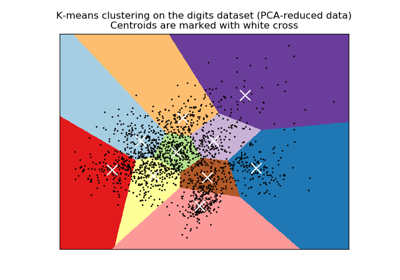sklearn.preprocessing.scale¶
-
sklearn.preprocessing.scale(X, axis=0, with_mean=True, with_std=True, copy=True)[source]¶ Standardize a dataset along any axis
Center to the mean and component wise scale to unit variance.
Read more in the User Guide.
- Parameters
- X{array-like, sparse matrix}
The data to center and scale.
- axisint (0 by default)
axis used to compute the means and standard deviations along. If 0, independently standardize each feature, otherwise (if 1) standardize each sample.
- with_meanboolean, True by default
If True, center the data before scaling.
- with_stdboolean, True by default
If True, scale the data to unit variance (or equivalently, unit standard deviation).
- copyboolean, optional, default True
set to False to perform inplace row normalization and avoid a copy (if the input is already a numpy array or a scipy.sparse CSC matrix and if axis is 1).
See also
StandardScalerPerforms scaling to unit variance using the``Transformer`` API (e.g. as part of a preprocessing
sklearn.pipeline.Pipeline).
Notes
This implementation will refuse to center scipy.sparse matrices since it would make them non-sparse and would potentially crash the program with memory exhaustion problems.
Instead the caller is expected to either set explicitly
with_mean=False(in that case, only variance scaling will be performed on the features of the CSC matrix) or to callX.toarray()if he/she expects the materialized dense array to fit in memory.To avoid memory copy the caller should pass a CSC matrix.
NaNs are treated as missing values: disregarded to compute the statistics, and maintained during the data transformation.
We use a biased estimator for the standard deviation, equivalent to
numpy.std(x, ddof=0). Note that the choice ofddofis unlikely to affect model performance.For a comparison of the different scalers, transformers, and normalizers, see examples/preprocessing/plot_all_scaling.py.

